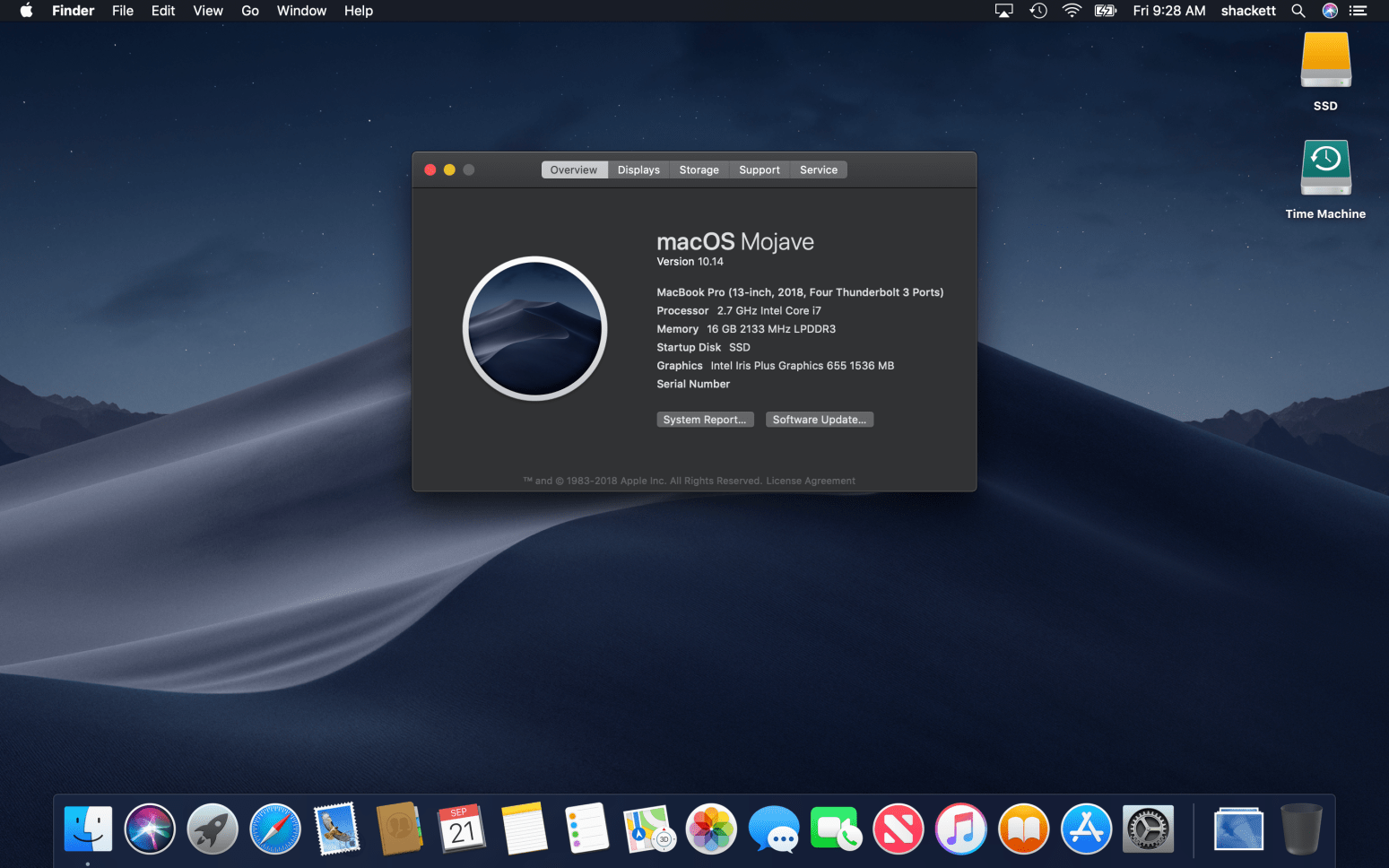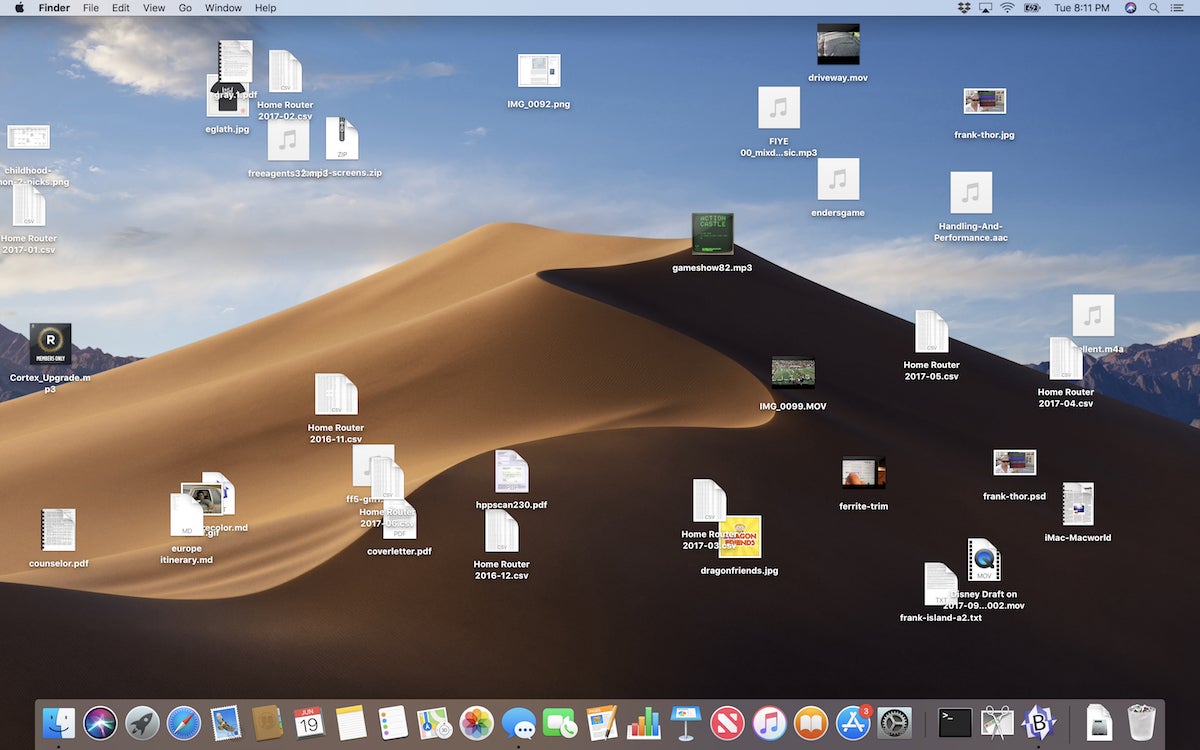

- #DVD PLAYER AND OS X MOJAVE HOW TO#
- #DVD PLAYER AND OS X MOJAVE MAC OS X#
- #DVD PLAYER AND OS X MOJAVE INSTALL#
- #DVD PLAYER AND OS X MOJAVE SOFTWARE#
#DVD PLAYER AND OS X MOJAVE SOFTWARE#
Joliet and UDF which is supported by (defunct as of 2012) Software Architect's ReadDVD (available for 10.4 and 10.5 PowerPC and Intel) in situations where the Mac operating system can't handle it directly. The rest require 9.5mm height drives.įor CDs and DVDs, you are likely to run intoĢ. Only the 17" MacBook Pro, and Unibody model MacBooks support the 12.5mm height drives. A firmware updateĪddresses the issue for some MacBook Pros: SATA bus speeds that are higher than your computer's built in SATA bus may require a jumper to downstep to your computer's speed.

#DVD PLAYER AND OS X MOJAVE MAC OS X#
Notes: 4k Hard drives have been supported since Mac OS X 10.4 according to: You are only likely to run into 1 through 4 today. Macdrive needed to read from Windows without a network. HFS Standard to boot Mac OS 8.0 or earlier Macs. Mac OS X: About the "Install Mac OS 9 Drivers" Option in Disk UtilityĮxternal drives may not be affected depending on how the bridge for the external drive was programmed.ħ. Note: for 5 & 6, there is limited support for above 128GB partitions on this article:Īlso Mac OS 9 formatting is needed for older boot of Mac OS 9, as is described here if formatting from Mac OS X on a Mac that can boot Mac OS 9: HFS+/Apple Partition Map/not Journaled to boot any PowerPC Mac with Mac OS 8.1 or later if the Mac is older than the operating system, but not Windows. Macdrive needed to read from Windows without a network.Ħ. HFS+/Apple Partition Map /Journaled to boot PowerPC Macs with Mac OS X 10.2.3 or later if the Mac is older than the operating system, but not Windows.

See the end of this tip for methods of partitioning.ĥ. GUID Macs support no erase partitioning, which still is only recommended with backing up. Note: Western Digital has noted some of their hard drives can't boot Intel Macs no matter what the formatting: HFS+/GUID to boot Intel Macs, but not boot Windows, and not be readable by PowerPC Macs (pre-2006 601, 603, 604, G3, G4, G5). If you are comfortable with such routines, and have a backup in case something goes wrong, I did find these routines, which I have not tested:Ĥ. Some versions of Mac OS X offer NTFS support if you want to fiddle with superuser command line routines. Tuxera NTFS, Google's Macfuse, and Paragon Software NTFS-Mac are three options for making it writable by Macs. NTFS for non-Mac bootable, but any Mac OS read-only without third party software larger hard drives you can use with any version of Windows to boot Windows. FAT32 for non-Mac bootable, but any Mac OS read/writable 4 GB and under drives you can use with any version of Windows to boot Windows.ģ. For more on upgrading to 10.6.5 or later, see this tip.Ģ.

ExFAT for non-Mac bootable but Mac OS X 10.6.5 or later read/write hard drives that can boot XP SP 2 or higher. These common formatting options exist for hard drives and flash drives, which you may see, and are usable in the manner suggested:ġ. If you have an Intel Mac, you can see the end of this tip about several methods of partitioning. Partitioning lets you specify the format of a drive when partitioning. Not for the faint at heart, but worth a try if you have a spare drive to test it on. Applications/Install\ macOS\ High\ Sierra.app/Contents/Resources/startosinstall -converttoapfs NOĪ command which is issued in the Terminal. There is a way at least to bypass this automatic formatting in High Sierra: Mounting it via USB while booted off an older system renders the drive invisible. The side effect of this is that any older system than High Sierra, can't read the drive directly, unless it used shared via a networking protocol such as FTP.
#DVD PLAYER AND OS X MOJAVE INSTALL#
Note: when an SSD, or other solid state media (such as a USB stick or SD card) is used to install Mac OS 10.13 High Sierra or Mac OS 10.14 Mojave, it automatically chooses APFS.
#DVD PLAYER AND OS X MOJAVE HOW TO#
How to choose between APFS and Mac OS Extended when formatting a disk for Mac - Apple Supportĭiscusses using Disk Utility for the new file system. Mac OS 10.13, released Septemhas introduced a new file system, APFS: Note, for hard drive model specific issues, see this tip:


 0 kommentar(er)
0 kommentar(er)
